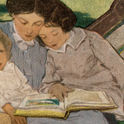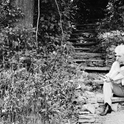Literary criticism is less popular than literary biography. A writer’s life can take on a familiar inspirational or tragic arc, while analysing their technique is thought to be rather dry. That’s why it’s such a pleasure to turn to George Saunders’s new book, a chatty yet eagle-eyed breakdown of seven short stories by four great Russian writers: Chekhov, Tolstoy, Gogol and Turgenev. Based on a class Saunders teaches at Syracuse University, the book prints the stories in full and explains how they work—sentence by sentence, image by image, plot-point by plot-point.
Saunders is a master of a certain kind of eccentric fiction superficially very different from the fine-grained realism of Chekhov or Tolstoy. (His novel Lincoln in the Bardo, which combines the life of Abraham Lincoln with Buddhist metaphysics, won the Booker in 2017.) But whether a story is about a lonely woman’s disappointments—Chekhov’s “In the Cart”—or the fantastical tale of a man who discovers he lacks a nose—Gogol’s “The Nose”—the same principles apply. “A story is not like real life,” writes Saunders. “It’s like a table with just a few things on it. The ‘meaning’ of the table is made by the choice of things and their relation to one another.” On any page of writing the author has made hundreds of choices. Whether he or she succeeded depends on how convincingly one choice flows from the next.
Saunders writes about his own struggles. For a long time he wrote like Hemingway, before realising that a pared-down prose style didn’t suit his odd imagination. (One of his best stories is about two colleagues playing prehistoric people in a theme park.) “The writer has to write in whatever way produces the necessary energy,” he says, while analysing Turgenev’s “The Singers,” a story that breaks traditional rules.
If Saunders can be gnomic—“stop aiming at the target and concentrate on the feeling of the arrow leaving the bow”—he is more often a generous and plain-speaking guide. He is honest about his own flaws. Not many writers would print one of their own stories for the reader to edit. This book, he says, reinvigorated his own passion for writing fiction. He might just start a few others on their journey.
A Swim in a Pond in the Rainby George Saunders (Bloomsbury, £16.99)












